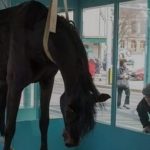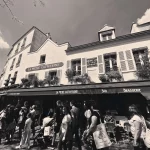Artists’ trip, Italy invites itself to Versailles!
J&L Art & Culture
Today we bring you to explore Versailles! Everybody jumps into the carriage, bring your luggage, we talk all about travel in this column: the artists' travels.
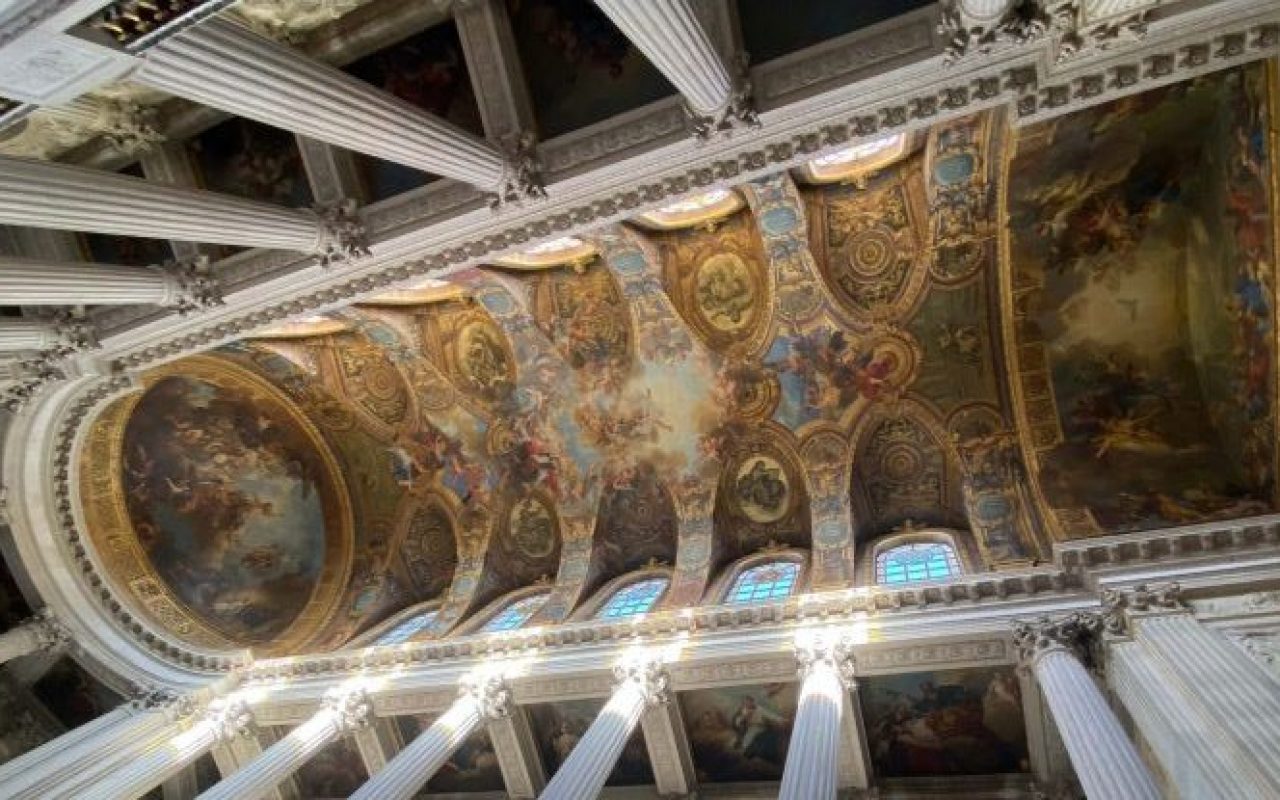
From the Quattrocento to the XIXth century, Italy was the model of creation and study. From the antique ruin to the great Renaissance masters, it was a mandatory trip to be emancipated from a guild and become a master painter or sculptor. With the establishment of the Royal Academy of painting and sculpture in 1648, then the French Academy in Rome in 1666, travelling to Italy was finally financed for the best students. They were sent there to evolve French art to a “superior” level, better than what have been already done. Isn’t it so French to be inspired by something, debate, analyze and then consider the result as better than the original one? Now, you know where the origin comes from : Versailles.
In 1662, Louis the XIVth commissions the enlargement of his father’s, Louis the XIIIth, hunting lodge. He moved into it in 1682, but during those twenty years the building had been reworked many times. Today, it is at the same time amusing and fascinating to observe the royal control over the arts, as well as the welter of artists all dedicated to building the greatness of a kingdom through its monarch figure thanks to his palace.
To do it so, they had to get inspired by what they knew were the most beautiful and impressive, the Roman, Venetian and Florentine churches and palaces. The Versailles Royal Chapel is probably the most remarkable example of this Italian influence in the palace. The three artists who have made the ceiling, Charles de La Fosse, Antoine Coypel and Jean-Baptiste Jouvenet, reuse majestic ideas borrowed from the Italians. Such as Gaulli in the Gésù church, Andrea Pozzo in Saint-Ignacio in Rome or even Virgin Mary Assumption in Parma by Correggio. In Versailles, we can see a holed sky with flying characters toward the divine golden light. Those cracks are unexpected divine apparitions thanks to the use ofquadratura. In other words, an extraordinary trompe-l’oeil where sculpture and architecture are, in fact, painting; thus trompe-l’oeil has reached its climax of perfection. However, careful, Jesus and God are not setting off toward each other, it is out of the question to turn your back to the King, they fly up to the sun !
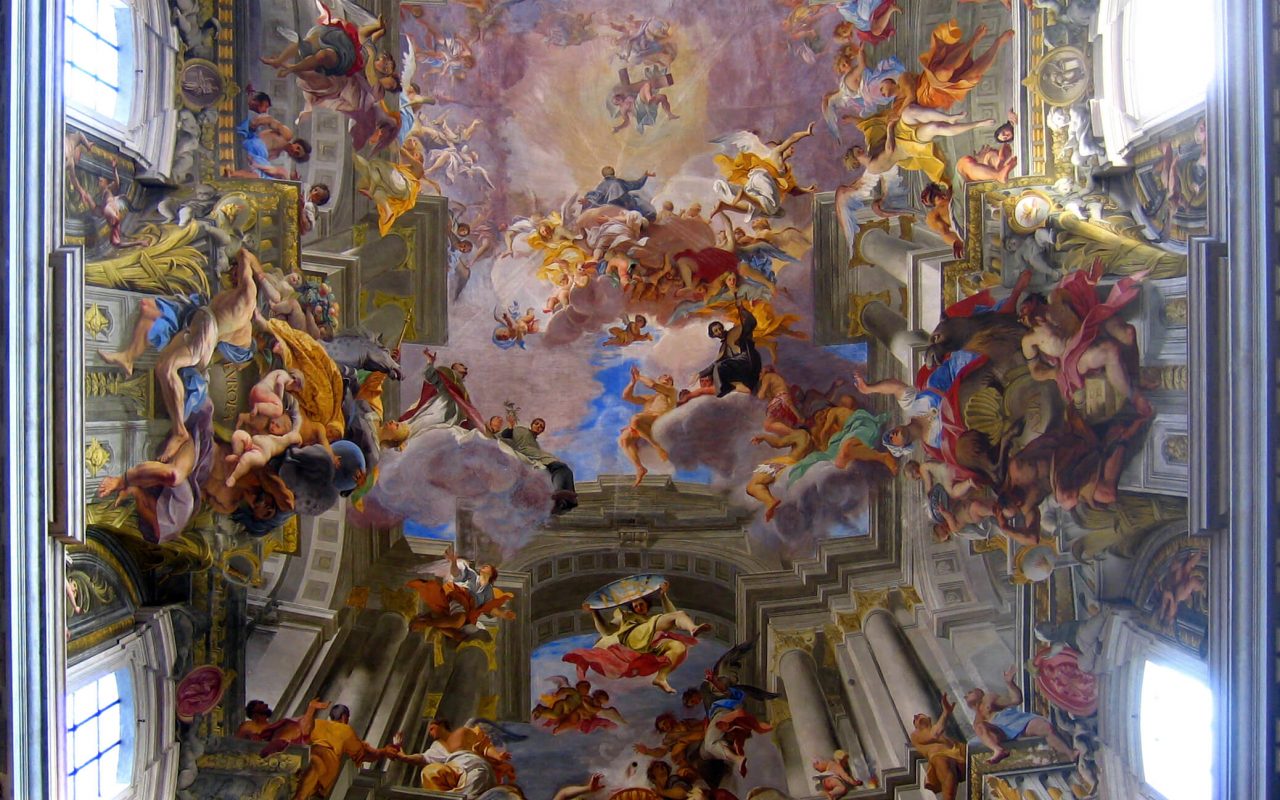
Hover your mouse over the ceilings to enlarge the details! 🔎
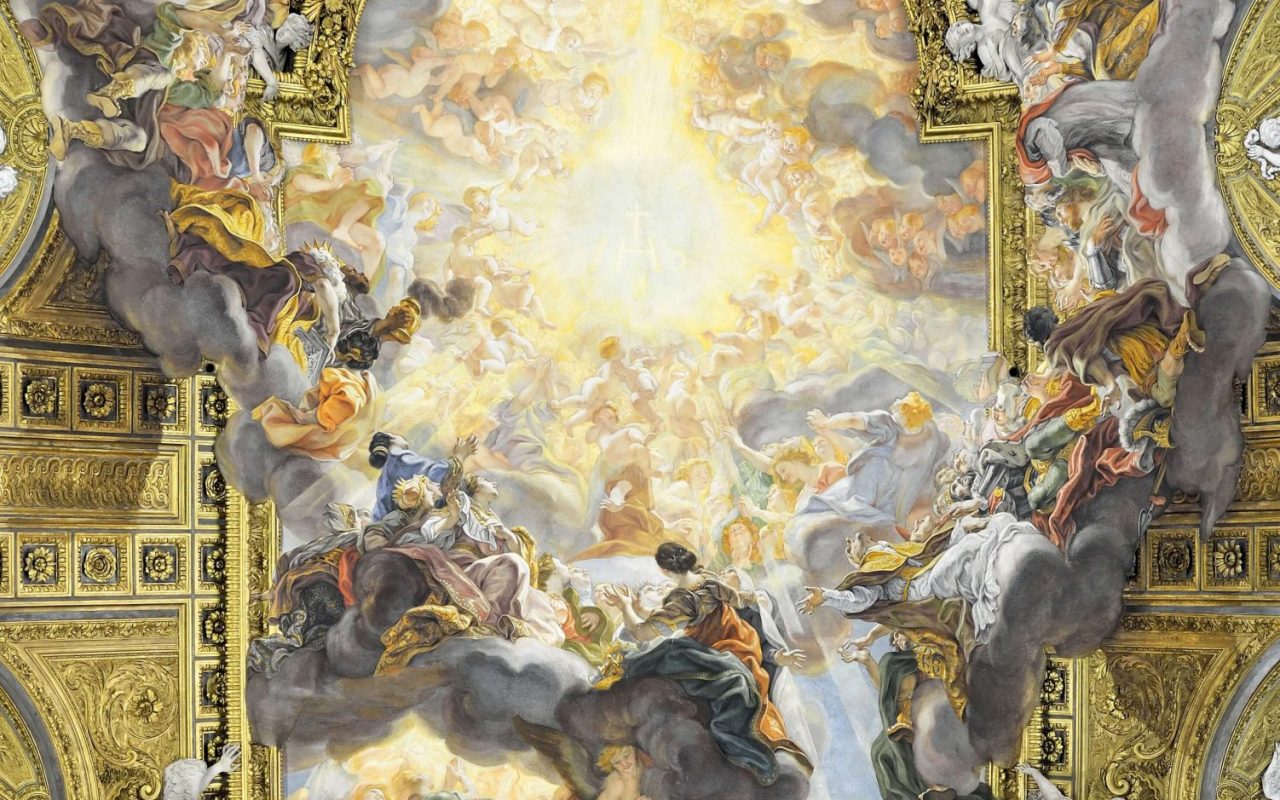
Hover your mouse over the ceilings to enlarge the details! 🔎
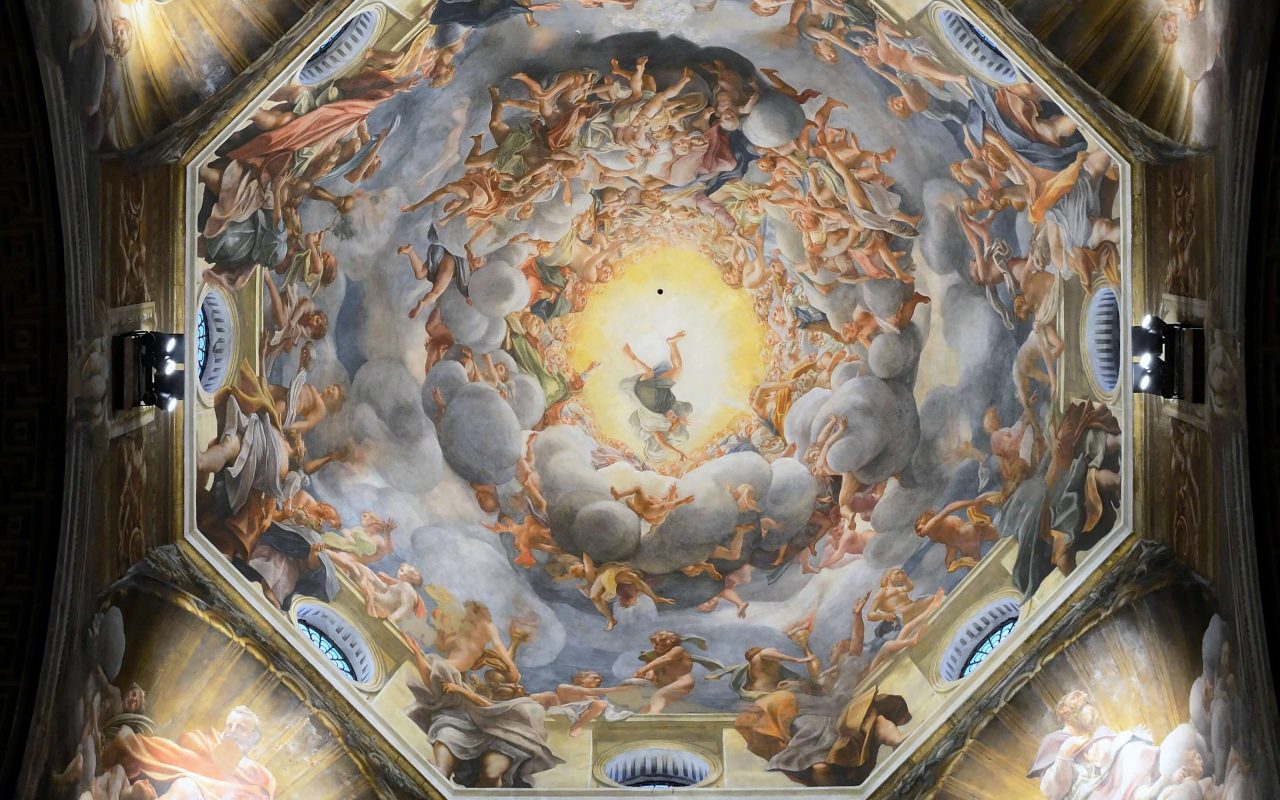
Why do we say the ceiling is in a French style ? Because the artists have preserved the vibrant colors of Veronese or Titian and the talent of romans painters without all unnecessary characters and baroque grandiloquence. Versailles launches then, a style called “classic”. Order in everything, as well as even in the garden the King controls Mother nature with his “French style garden”.
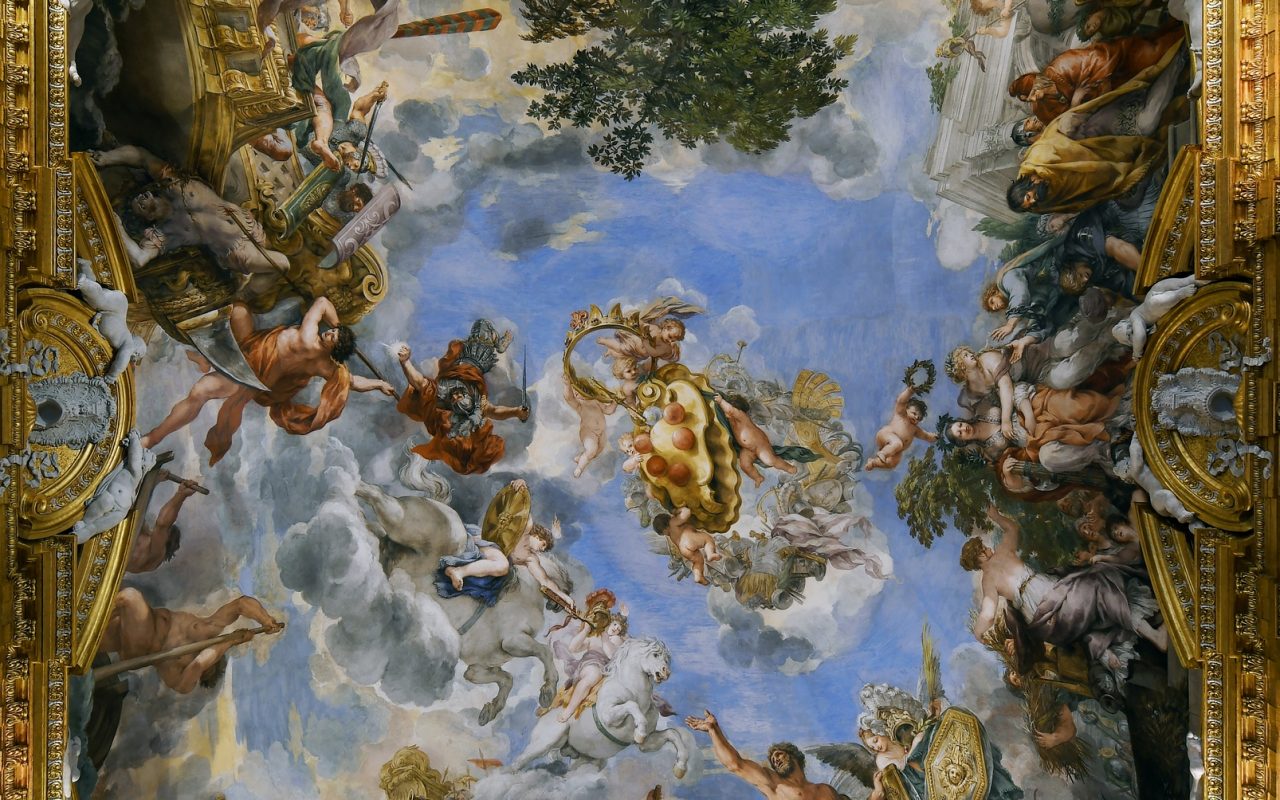
Hover your mouse over the ceilings to enlarge the details! 🔎
If you keep exploring the palace, you enter to the King’s Estate, where the ceilings are inspired by roman gods and goddesses but also planets. It is the King’s painter, Charles Le Brun who designed the entire program, using references from the Pitti Palace in Florence, painted by Andrea Pozzo. Some modifications, through the XVIIth and XVIIIth centuries, don’t give us the chance to appreciate all the original rooms but the Apollon room offers an interesting parallel to make with the Pitti palace. Nevertheless, there is in Versailles, an obvious delicacy thanks to the lake of subsidiary figures which gives a less overwhelming impression, more focused on the general light effect.
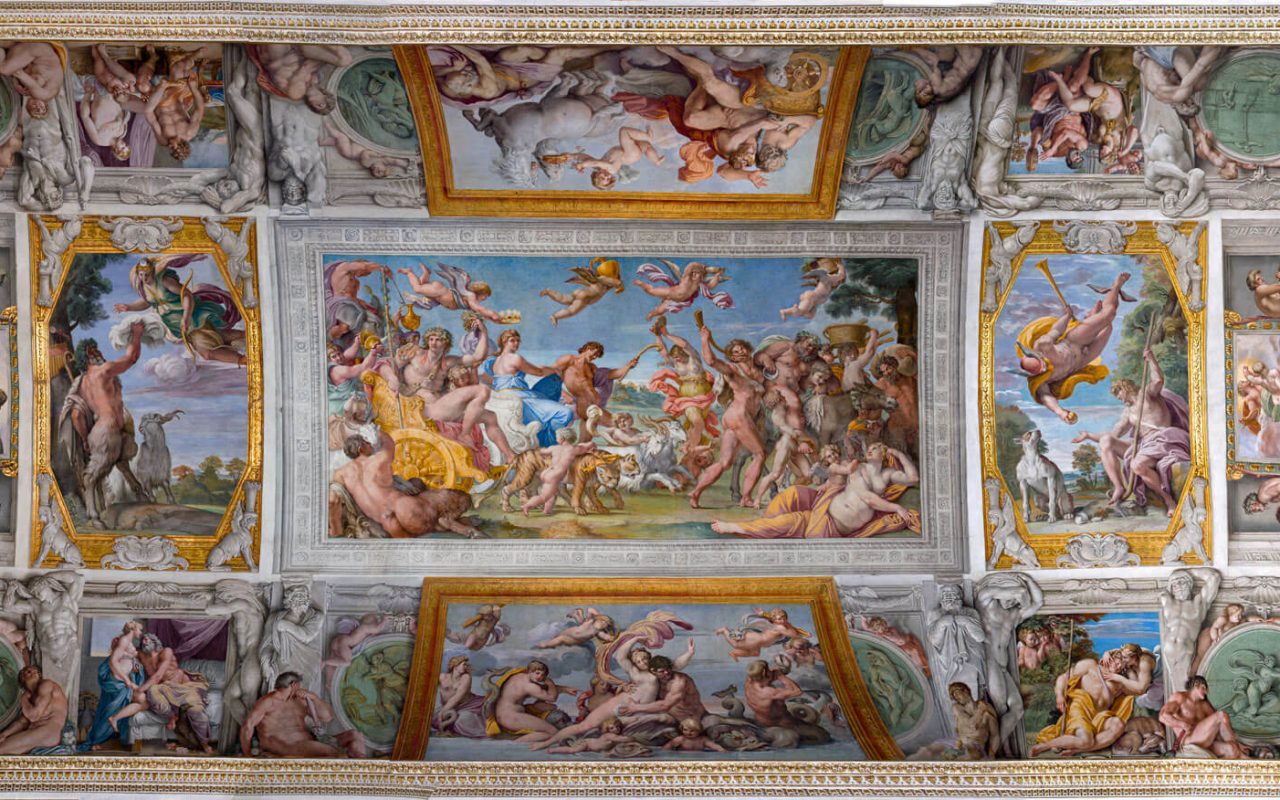
It is happening in the marvelous hall of Mirrors as well. Inspired by the Farnese Palace in Rome, painted by Annibale Carracci at the beginning of the XVIIth century, Le Brun unframed his paintings to reinvent a free reading. The 18 first glorious years of Louis the XIVth reign are offered under your eyes without chronological order, but on the contrary, inviting you to walk around to discover them. The king is here, he is not Apollo or Hercules anymore, he is himself in his glory.
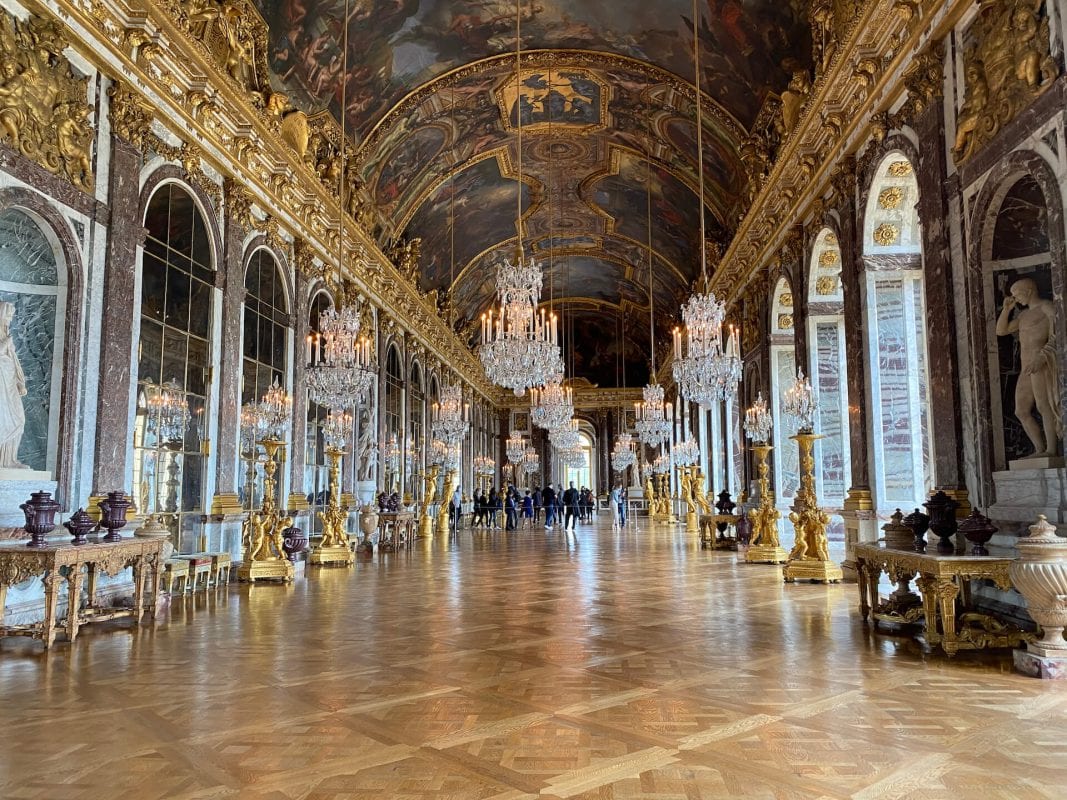
Even though you admire or not the reign of the Sun King, you can’t leave Versailles and feel indifferent. It is here France has affirmed its artistic talent, where the student exceeded the master. For any artist in the world, Italy has remained the most important trip to make to learn the basics of art, and the palace of Versailles is a turning point in the French Art History. So, why don’t you sprinkle your life with a few travels and tours? Make you happy, it is good for knowledge !
Jessica







